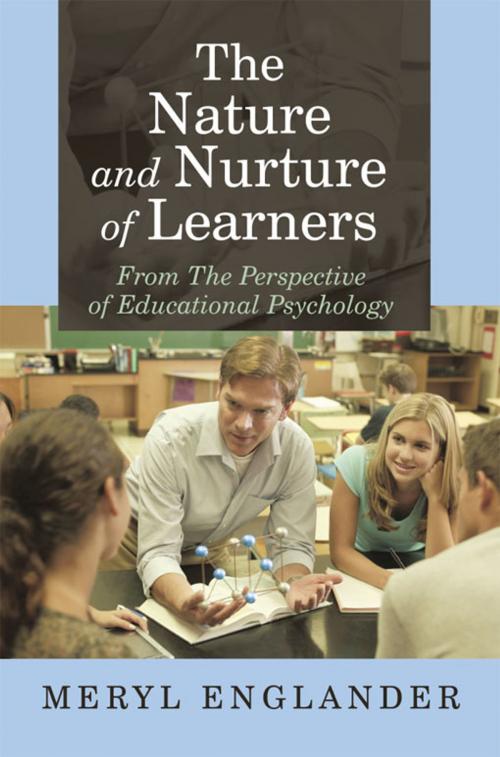The Nature and Nurture of Learners
From the Perspective of Educational Psychology
Nonfiction, Social & Cultural Studies, Social Science, Sociology, Reference & Language, Education & Teaching, Health & Well Being, Psychology| Author: | Meryl Englander | ISBN: | 9781449083298 |
| Publisher: | AuthorHouse | Publication: | April 21, 2010 |
| Imprint: | AuthorHouse | Language: | English |
| Author: | Meryl Englander |
| ISBN: | 9781449083298 |
| Publisher: | AuthorHouse |
| Publication: | April 21, 2010 |
| Imprint: | AuthorHouse |
| Language: | English |
Prospective and in-service teachers are the intended readers of this book. Teaching involves much more then dispensing knowledge. Teaching is a process of arranging activities that will enable individuals to learn and behave appropriately. The appropriateness of the activities depends on the degree they interact with the status of the targeted individuals.
Just as physicians need to know about the nature of the human body and carpenters need to now about the nature of wood, teachers need to know about the nature of people that is related to learning and behavior. Thereby, the focus of this text is the relevant personal characteristics: the intellect, motivation, and sense of self each of which influence learning and behavior. Research findings and models within educational psychology are used to define the relevant human personal characteristics .
In order to arrange meaningful activities teachers strive to achieve selected objectives. The text identifies four broad objectives within which specific lesson objectives can be identified. The objectives themselves and more particularly the proposed activities must be oriented around the personal characteristics of the targeted learners.
Age, grade level, ethnic background, and gender are insufficient indicators of learner qualifications.. Relevant information for learning are within individual learners as exhibited through behavior. Observations are the key indicators of learner readiness to learn. The text recommends that students begin now to develop skills for identifying the status of learners and classroom conditions through interviews, noting various classroom behaviors, and analyzing the findings by developing portfolios.
Small group discussions are encouraged so that students can share skills in analyzing real problems and thereby develop habits and skills for working with colleagues.
Prospective and in-service teachers are the intended readers of this book. Teaching involves much more then dispensing knowledge. Teaching is a process of arranging activities that will enable individuals to learn and behave appropriately. The appropriateness of the activities depends on the degree they interact with the status of the targeted individuals.
Just as physicians need to know about the nature of the human body and carpenters need to now about the nature of wood, teachers need to know about the nature of people that is related to learning and behavior. Thereby, the focus of this text is the relevant personal characteristics: the intellect, motivation, and sense of self each of which influence learning and behavior. Research findings and models within educational psychology are used to define the relevant human personal characteristics .
In order to arrange meaningful activities teachers strive to achieve selected objectives. The text identifies four broad objectives within which specific lesson objectives can be identified. The objectives themselves and more particularly the proposed activities must be oriented around the personal characteristics of the targeted learners.
Age, grade level, ethnic background, and gender are insufficient indicators of learner qualifications.. Relevant information for learning are within individual learners as exhibited through behavior. Observations are the key indicators of learner readiness to learn. The text recommends that students begin now to develop skills for identifying the status of learners and classroom conditions through interviews, noting various classroom behaviors, and analyzing the findings by developing portfolios.
Small group discussions are encouraged so that students can share skills in analyzing real problems and thereby develop habits and skills for working with colleagues.















